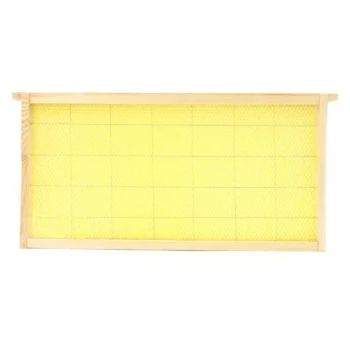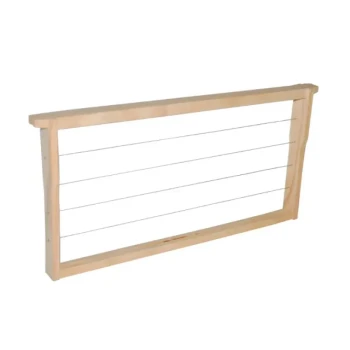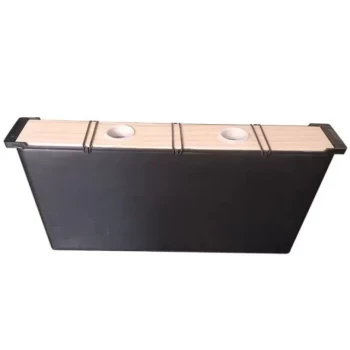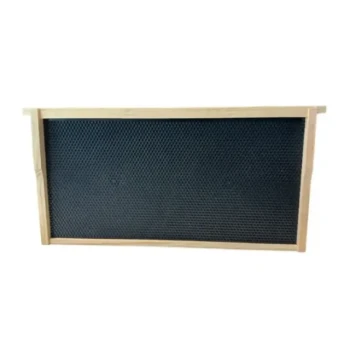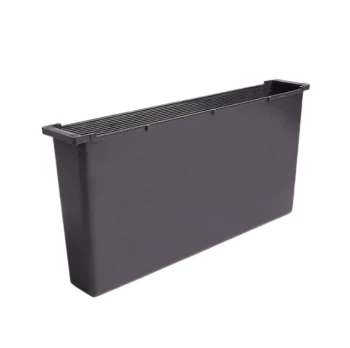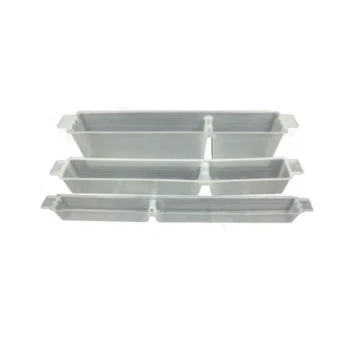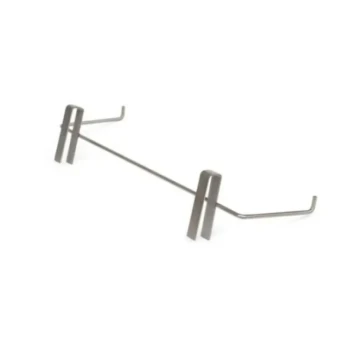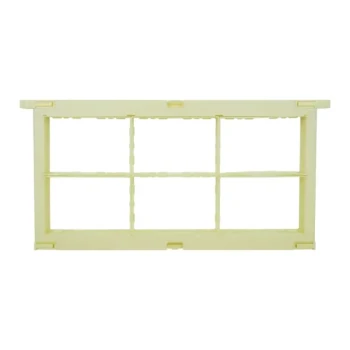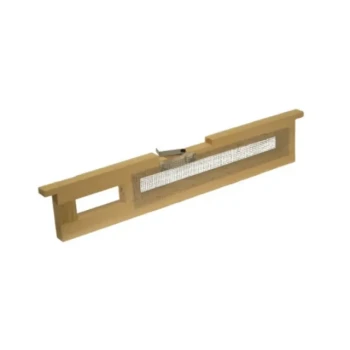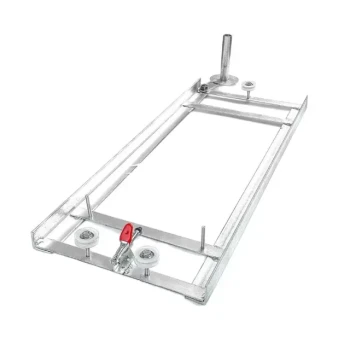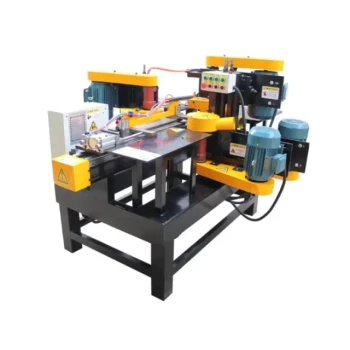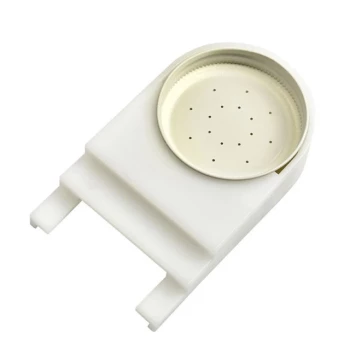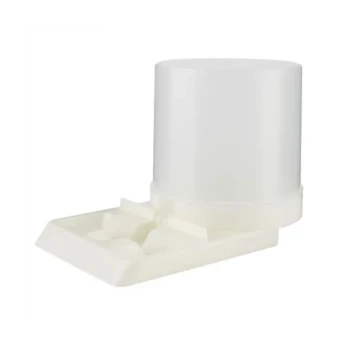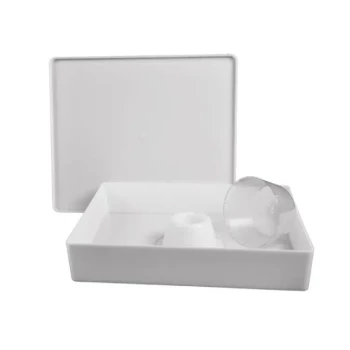In beekeeping, the fundamental difference between a brood frame and a super frame comes down to their primary function, which in turn dictates their most common size. A brood frame is used in the lower hive bodies, called brood boxes, and serves as the nursery where the queen lays eggs and the colony raises its young. A super frame is used in the upper boxes, or "supers," specifically for the storage of surplus honey that the beekeeper can harvest.
The distinction between frame types is a strategic choice balancing the biological needs of the honeybee colony against the practical, physical needs of the beekeeper. The bees need a large, uninterrupted area for raising brood, while the beekeeper needs honey boxes that are a manageable weight to lift.
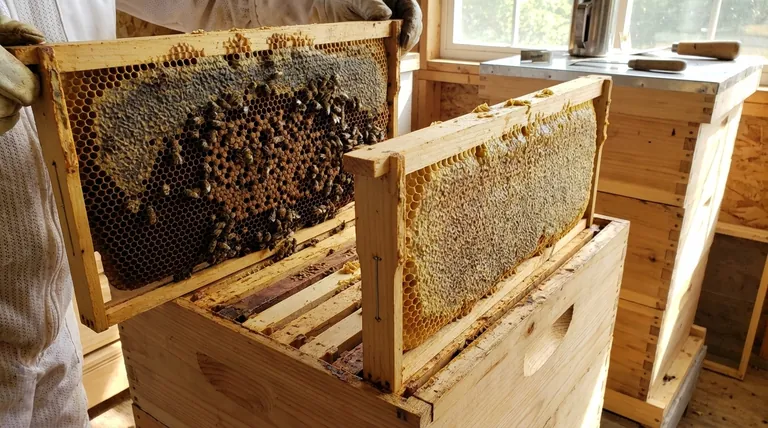
The Core Difference: Function Defines Form
The role of a frame determines its ideal characteristics. The names "brood frame" and "super frame" are less about the frame itself and more about where it is placed in the hive and how the bees are intended to use it.
The Brood Frame: The Nursery of the Hive
A brood frame is dedicated to the health and expansion of the colony's population. It is here that the queen lays her eggs, which progress through the stages of larva and pupa.
Bees use the cells on these frames to raise new worker bees, drones, and future queens. You will also find pollen and some honey stored here as immediate food for the developing brood.
The Super Frame: The Pantry of the Hive
A super frame is placed in the hive specifically for the bees to store excess honey. These frames are located in the boxes (supers) stacked on top of the main brood chamber.
Because this honey is "surplus" beyond what the colony needs for its immediate survival and winter stores, it is the honey that the beekeeper harvests.
Why Size Matters: Deep vs. Medium Frames
The most significant physical difference between a standard brood frame and a honey super frame is typically their height. This is a practical consideration for the beekeeper.
Deep Frames (9 1/8 inches): The Standard for Brood
Deep frames are the largest and are most commonly used in brood boxes. Their large surface area allows the queen to lay eggs in a continuous, solid pattern, which is her natural inclination.
This large, uninterrupted brood nest promotes a strong, healthy, and populous colony. While bees will also store honey in deep frames for their own winter consumption, a full deep frame can weigh 80-90 pounds, making it far too heavy for routine harvesting.
Medium Frames (6 1/4 inches): The Standard for Honey Supers
Medium frames are the most popular choice for honey supers. Their smaller size results in a box that is much lighter and easier for the beekeeper to handle.
A full medium super weighs around 40-50 pounds—still heavy, but far more manageable to lift and process than a deep box. The use of smaller frames for honey makes the entire process of harvesting more practical and less physically demanding.
Understanding the Trade-offs
Choosing your equipment involves weighing several factors. There is no single "correct" answer, only the best approach for your goals and physical abilities.
The Beekeeper's Back vs. The Queen's Preference
The classic setup of deep brood boxes and medium supers is a direct compromise. It gives the queen the large frames she prefers while giving the beekeeper lighter boxes of honey to harvest.
However, some beekeepers opt to use medium frames for all their boxes, including the brood chamber. This standardizes all equipment but forces the queen to cross the wooden barrier between two medium brood boxes to lay, which is a less natural pattern. The primary benefit is that every box in the hive is a manageable weight.
Material Choices: Wood vs. Plastic
Frames are typically made of wood or food-grade plastic. Wooden frames are traditional, made from a natural material, and allow for different types of wax or plastic foundation to be inserted. They are generally less expensive but require assembly.
Plastic frames often come as a single, molded piece with the foundation pattern built-in, making them very durable and simple to use. The choice is a matter of beekeeper preference, weighing tradition and natural materials against convenience and durability.
Choosing the Right Frames for Your Hive
Your decision on frame size and type will define your entire beekeeping management style.
- If your primary focus is a traditional setup that mimics the bees' natural preference: Use deep frames for your brood boxes and medium frames for your honey supers.
- If your primary focus is simplifying equipment and ensuring all boxes are a manageable weight: Use medium frames for both your brood boxes and your honey supers.
- If your primary focus is durability and minimal assembly: Consider using one-piece plastic frames, which are available in both deep and medium sizes.
Ultimately, understanding the purpose behind each piece of equipment empowers you to build a hive that works for both your bees and your beekeeping goals.
Summary Table:
| Feature | Brood Frame | Super Frame |
|---|---|---|
| Primary Function | Nursery for raising brood | Storage for surplus honey |
| Common Size | Deep (9 1/8") | Medium (6 1/4") |
| Location in Hive | Lower brood boxes | Upper honey supers |
| Full Box Weight | 80-90 lbs | 40-50 lbs |
| Ideal For | Strong colony growth | Manageable honey harvest |
Ready to build a hive that works for both your bees and your back?
At HONESTBEE, we supply commercial apiaries and beekeeping equipment distributors with the high-quality, durable frames and equipment needed for efficient hive management. Whether you prefer traditional deep frames for brood boxes or standardized medium frames for easier handling, we have the wholesale supplies to support your operation's success.
Contact our team today to discuss your specific needs and get a quote on our full range of beekeeping supplies.
Visual Guide

Related Products
- Assembled Wooden Bee Frames with Beeswax Foundation Ready to Use by HONESTBEE
- HONESTBEE Wired and Assembled Wooden Bee Frames Foundation for a Thriving Hive
- Professional In-Hive Frame Bee Feeder by HONESTBEE
- Assembled Wooden Bee Frames with Plastic Foundation for Durability and Convenience by HONESTBEE
- 3.5L Plastic Beehive Frame Feeder Deep Frame Water Feeder for In Hive Use
People Also Ask
- When should I throw away my bee frame? A Guide to Hive Health & Frame Rotation
- Can I reuse old frames? A practical guide to saving money and reducing waste
- How many frames fit in a 10 frame hive? A Guide to Maximizing Your Hive's Potential
- How do wooden frames perform during honey extraction? Superior Rigidity for a Smoother Harvest
- How are Langstroth beehive frames assembled? A Step-by-Step Guide for a Durable Hive
